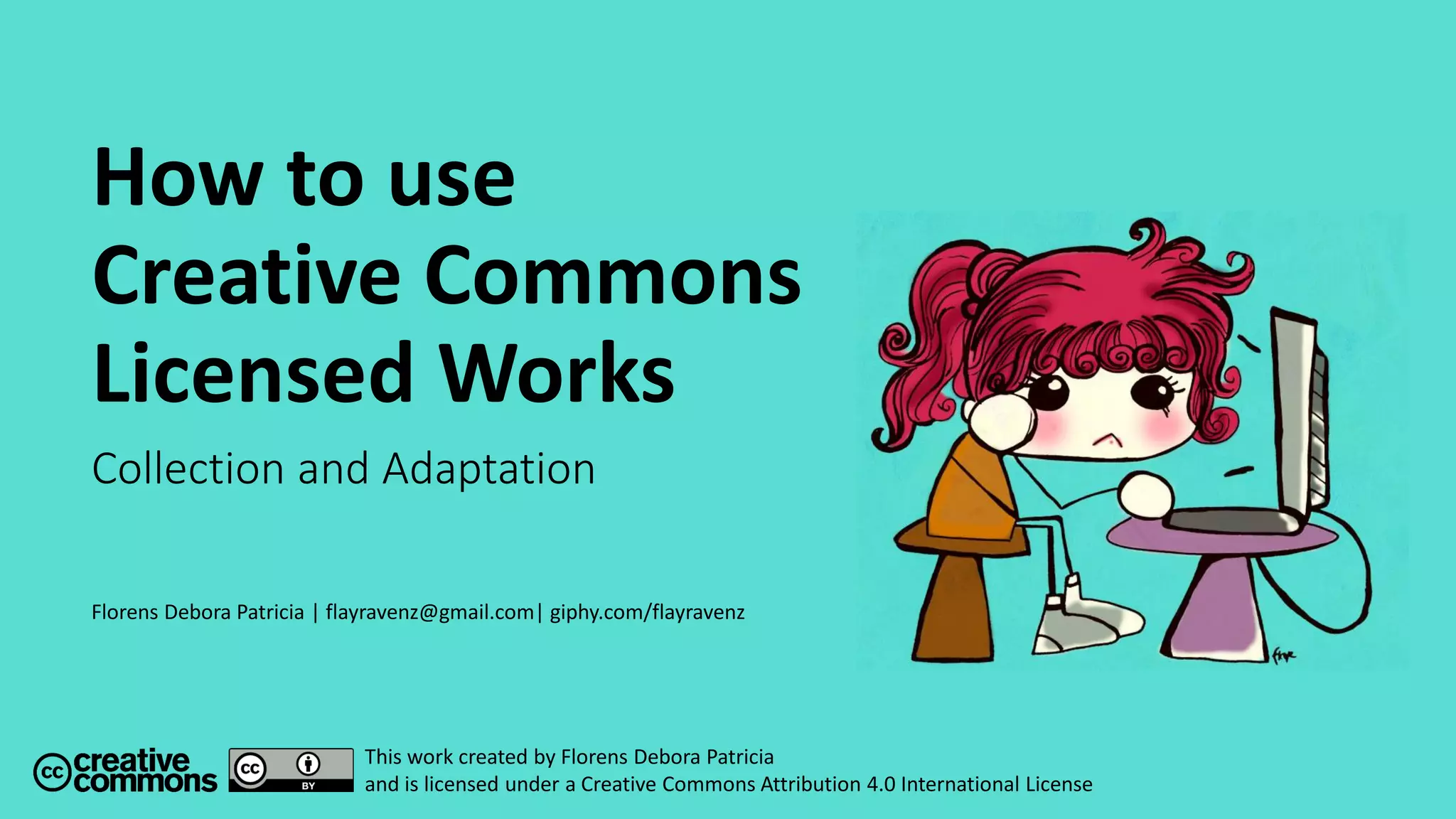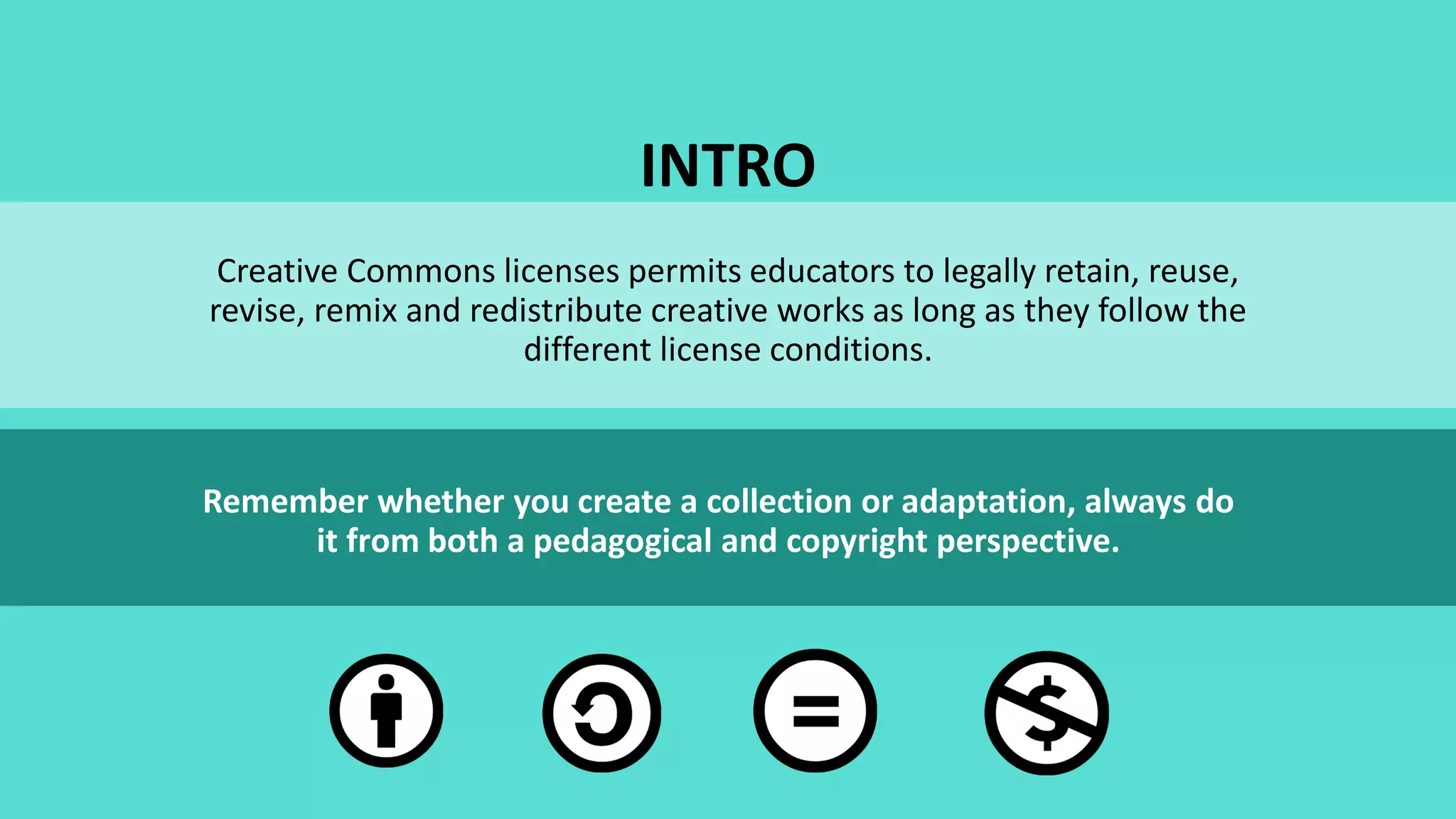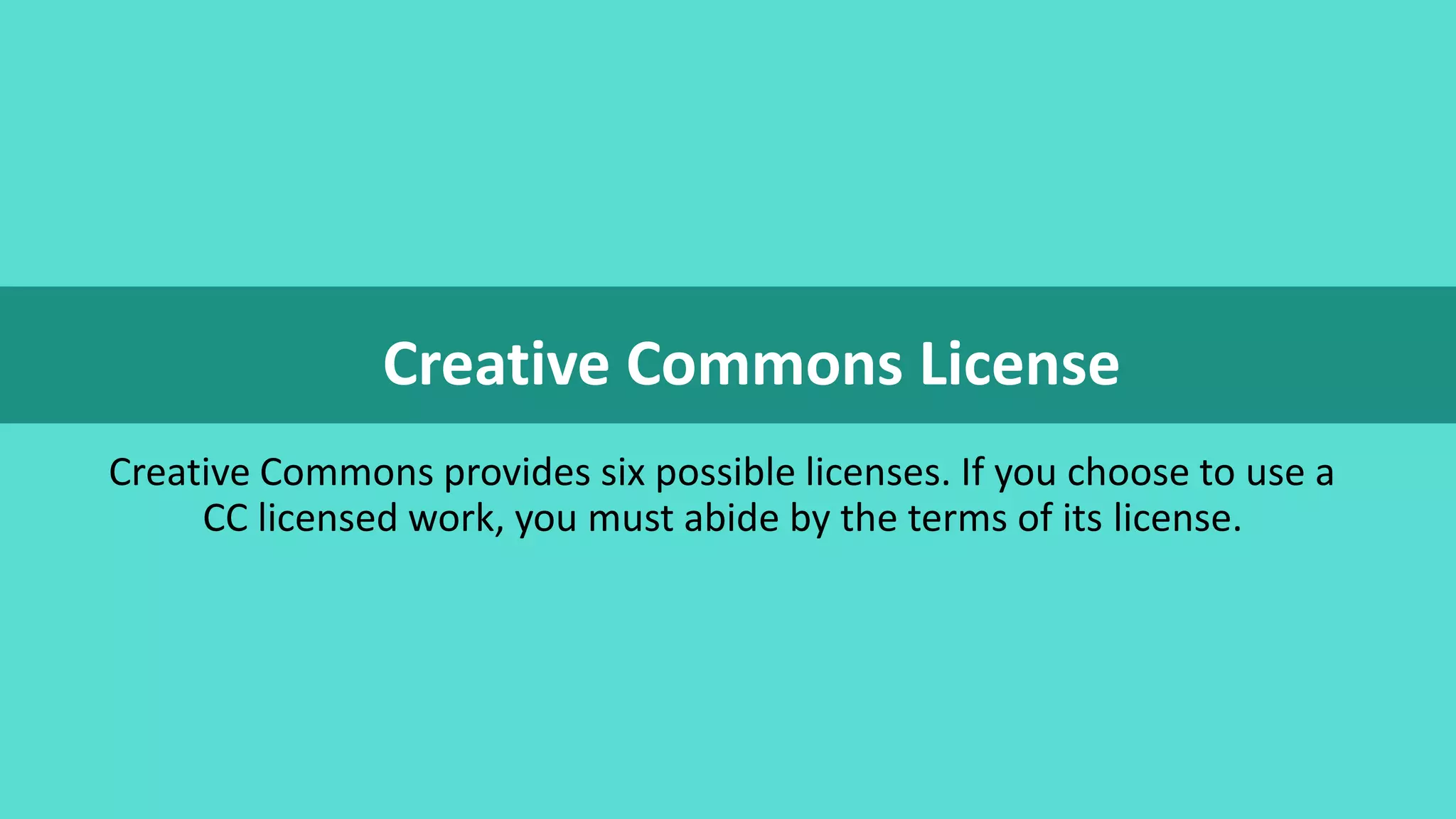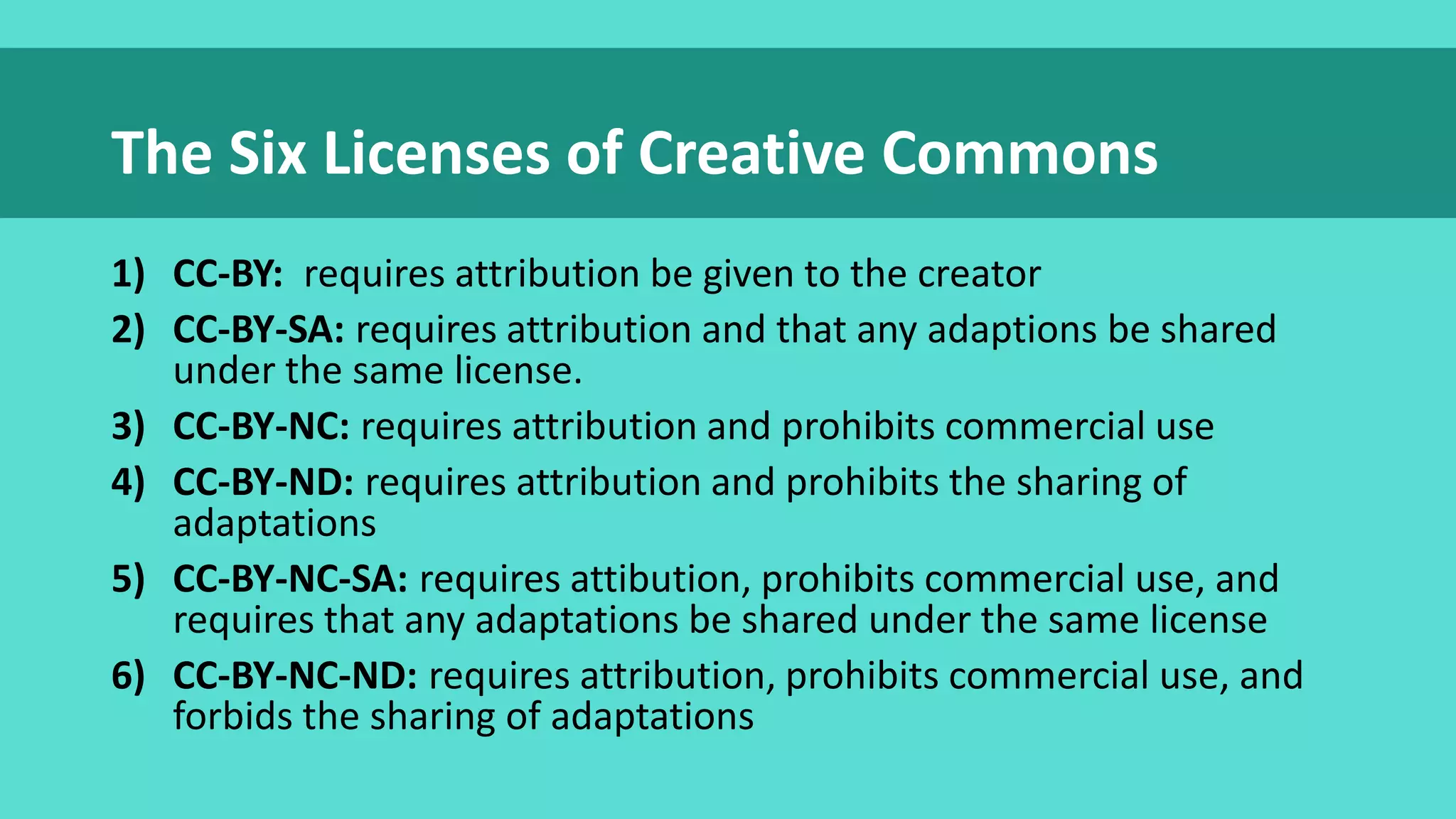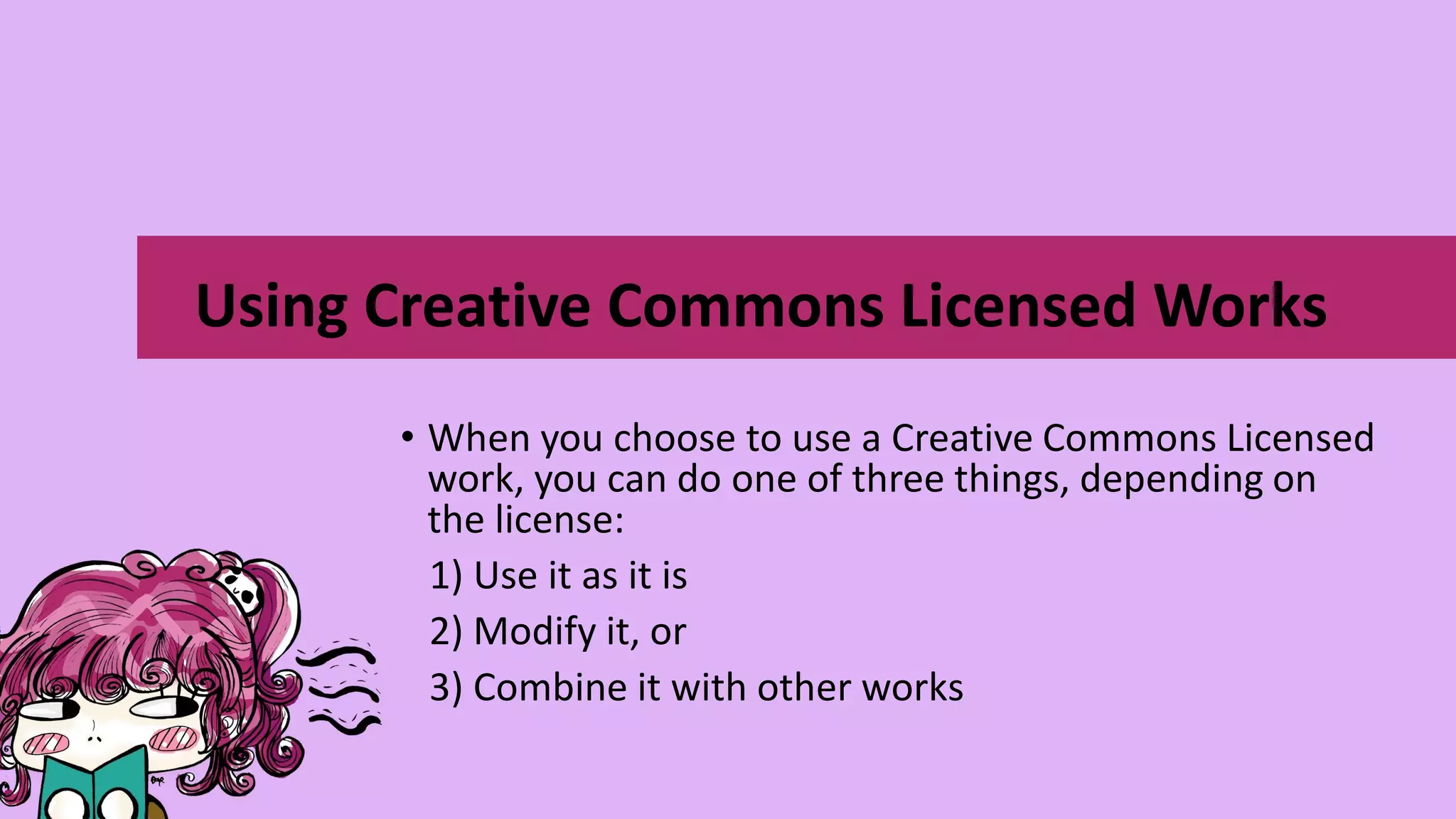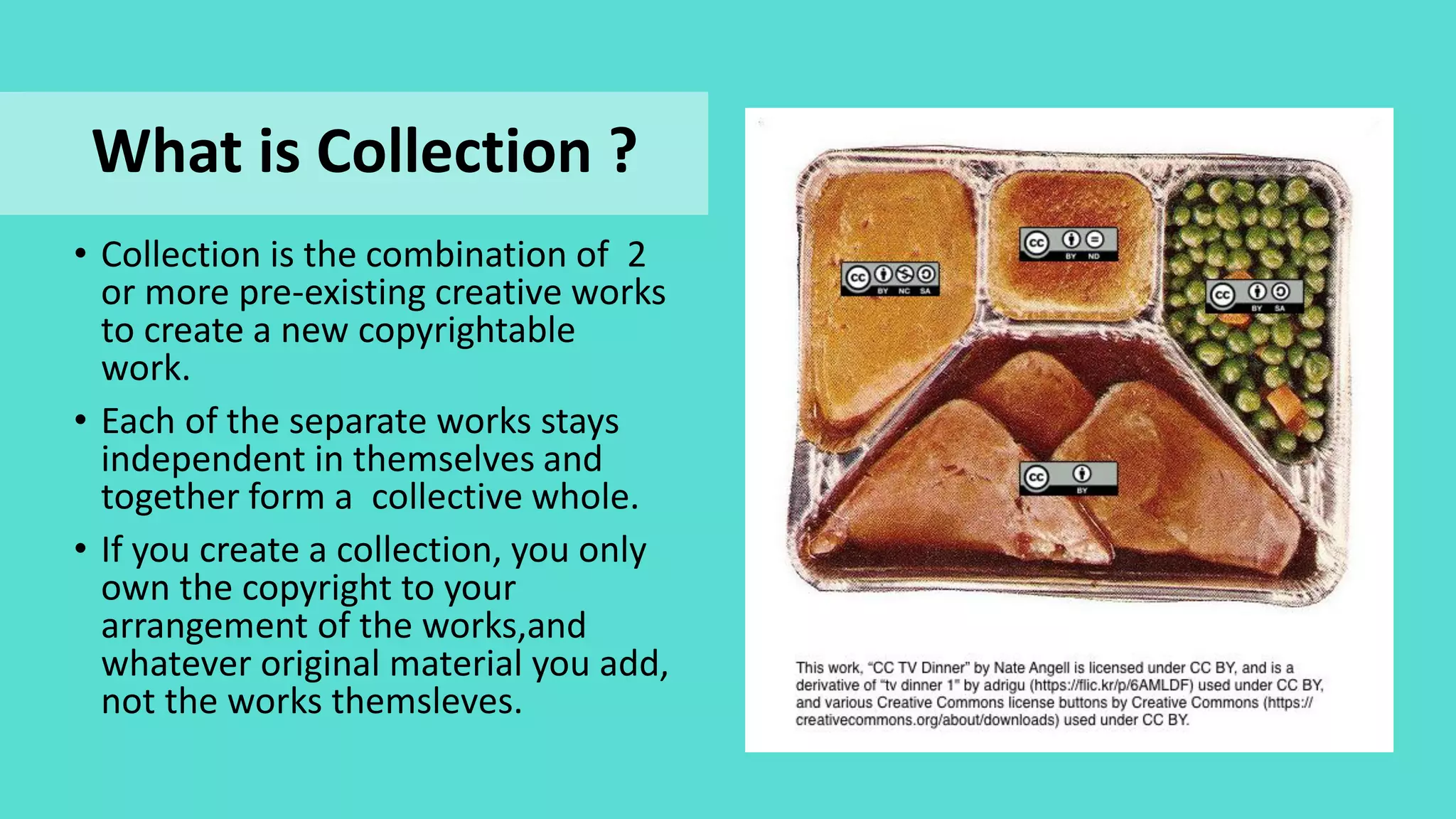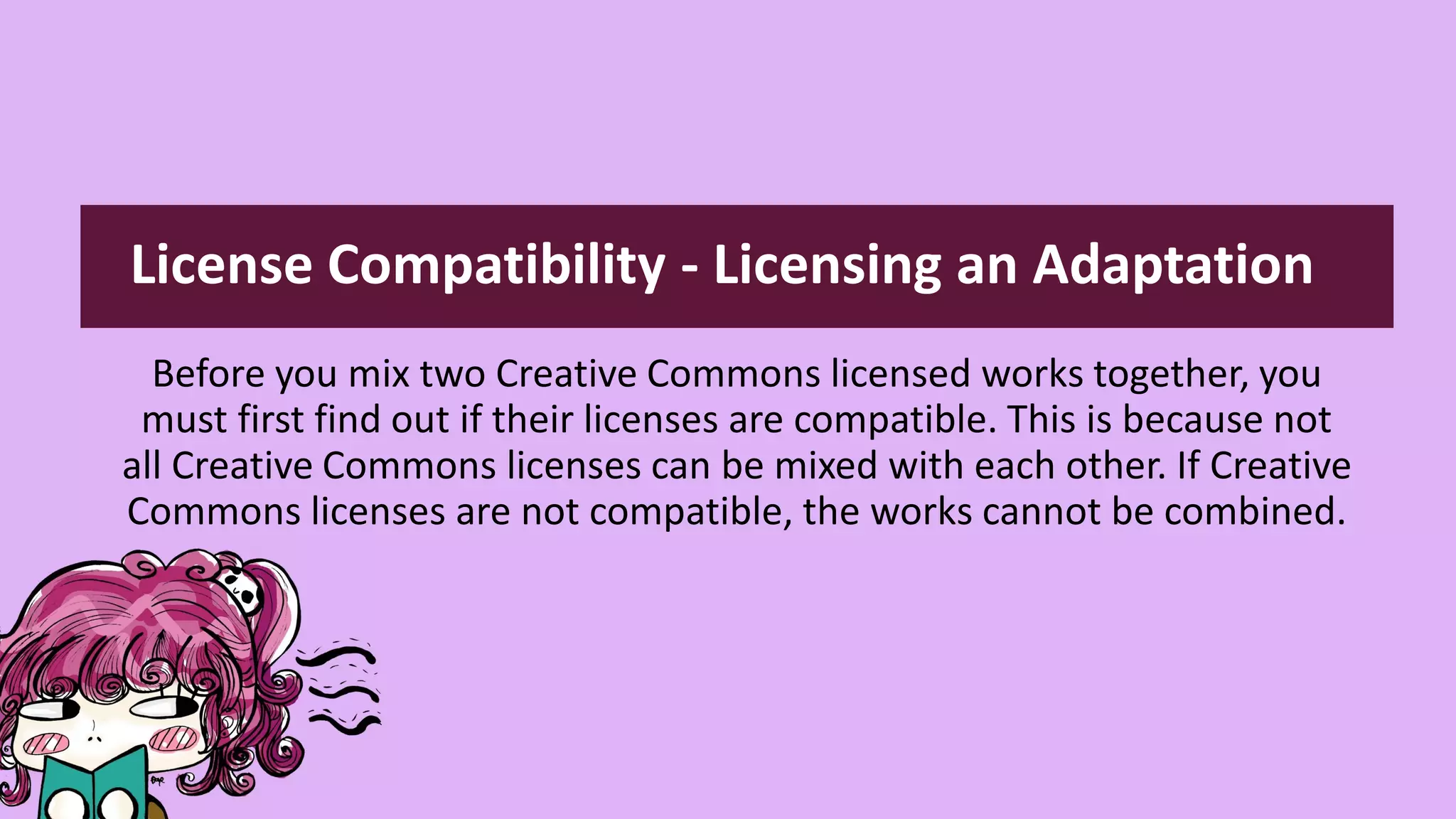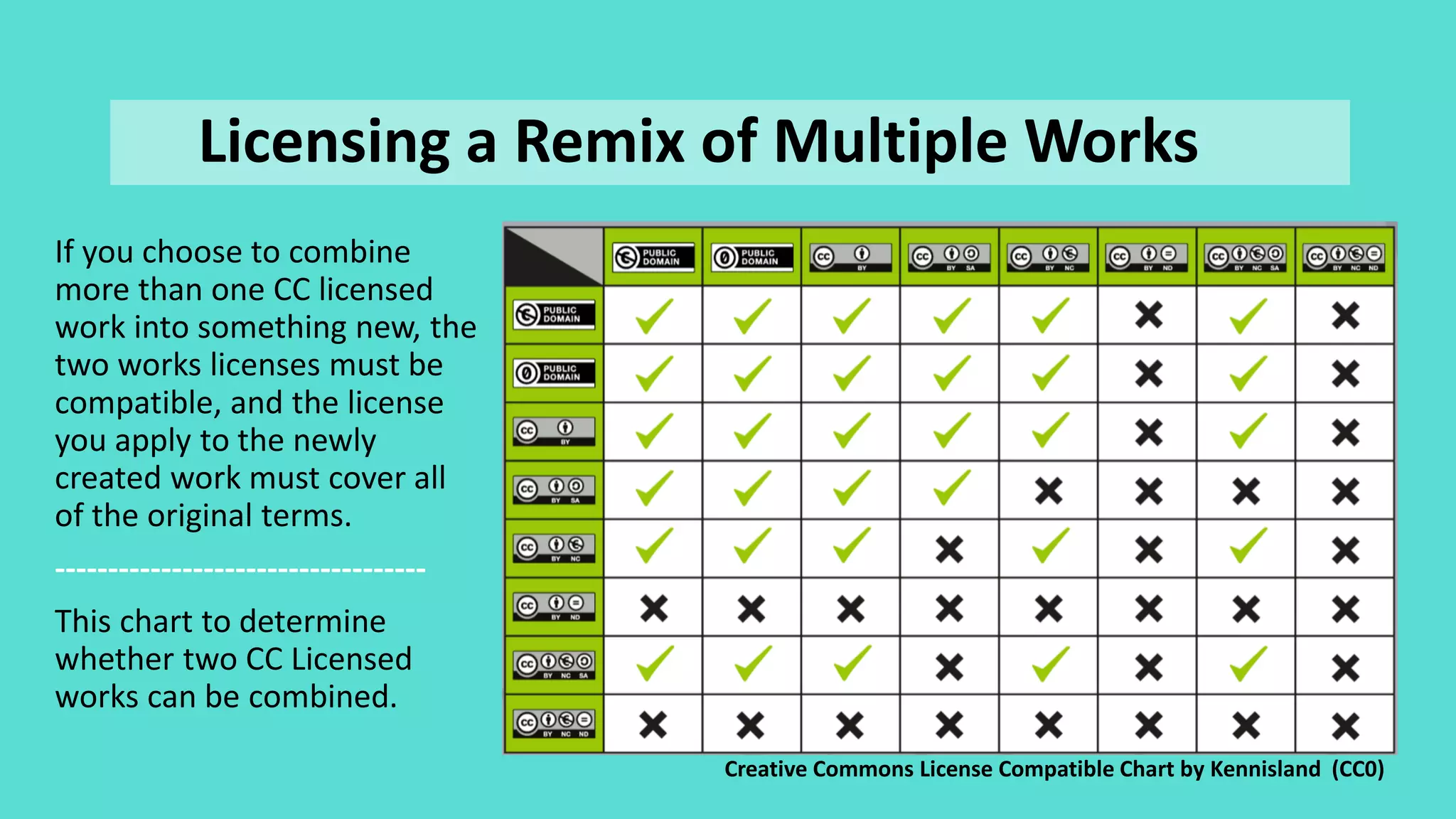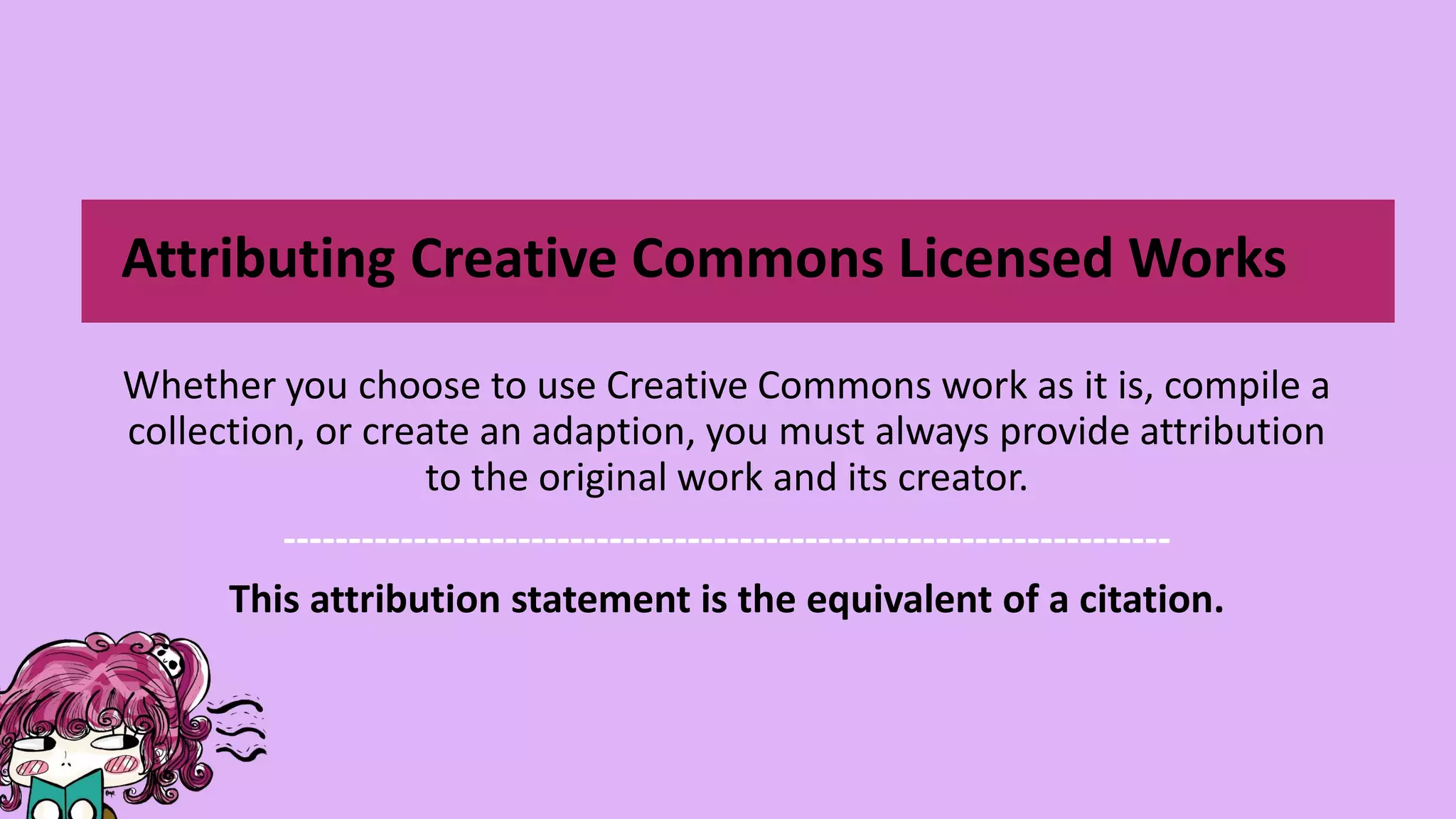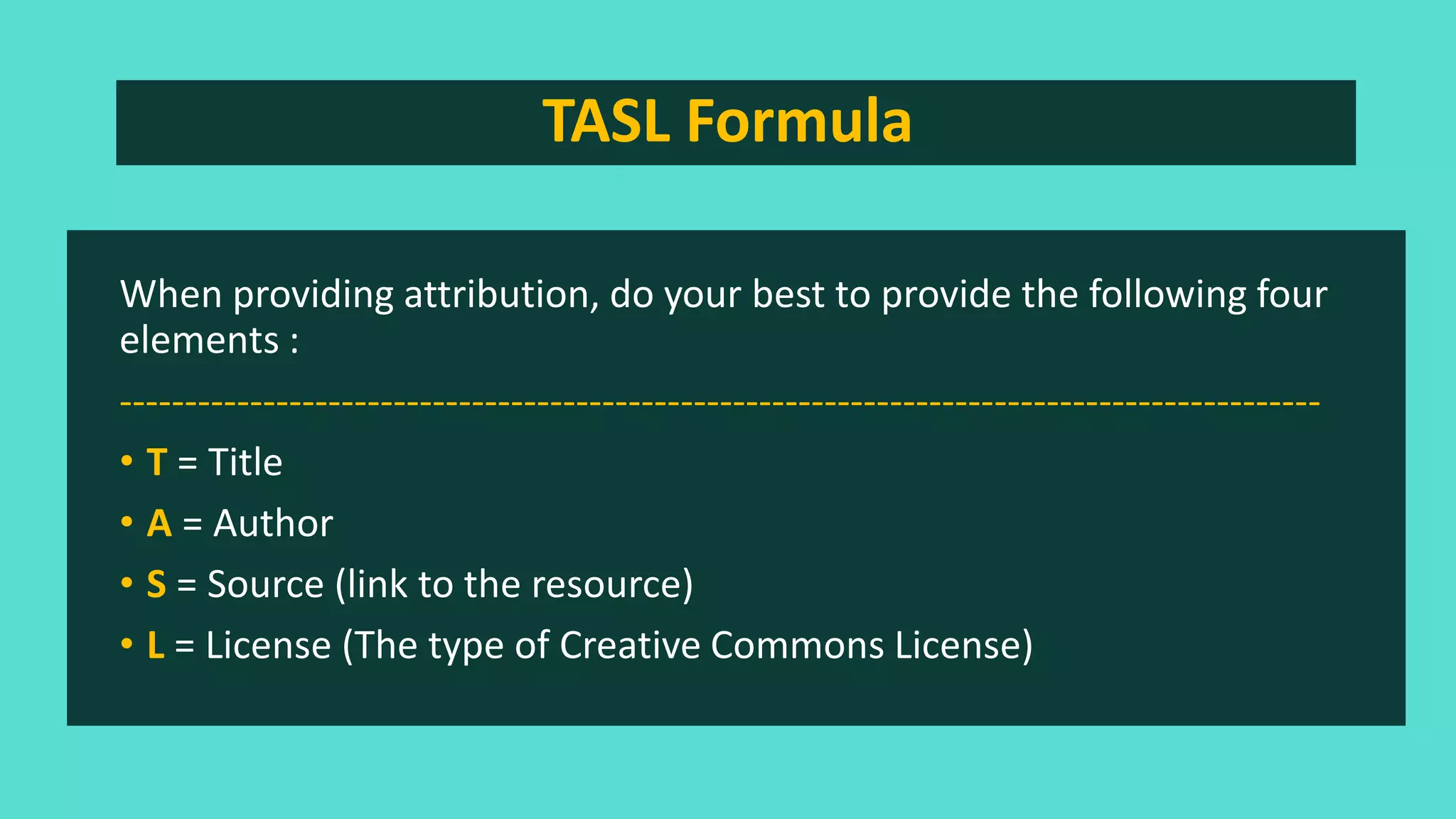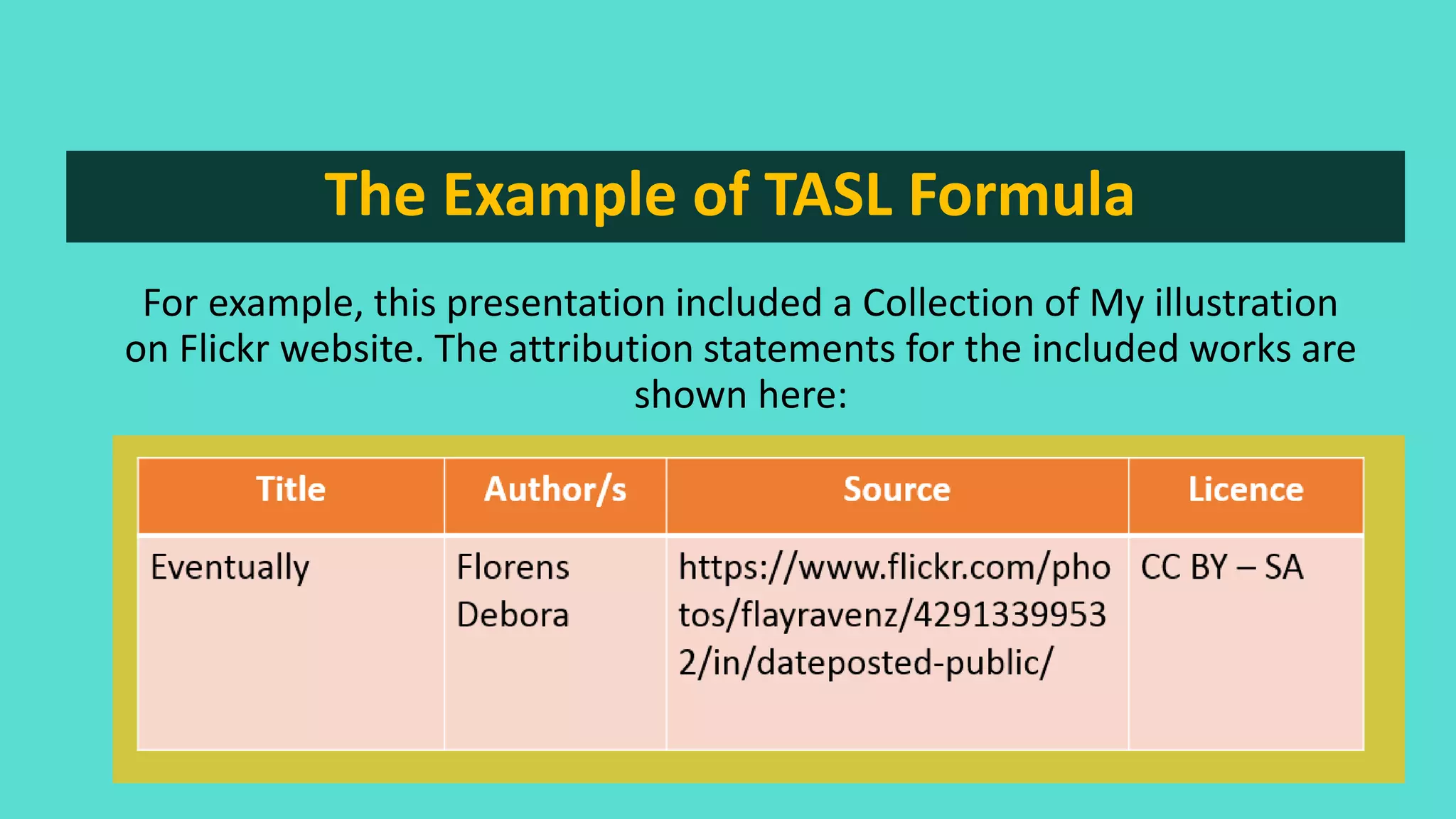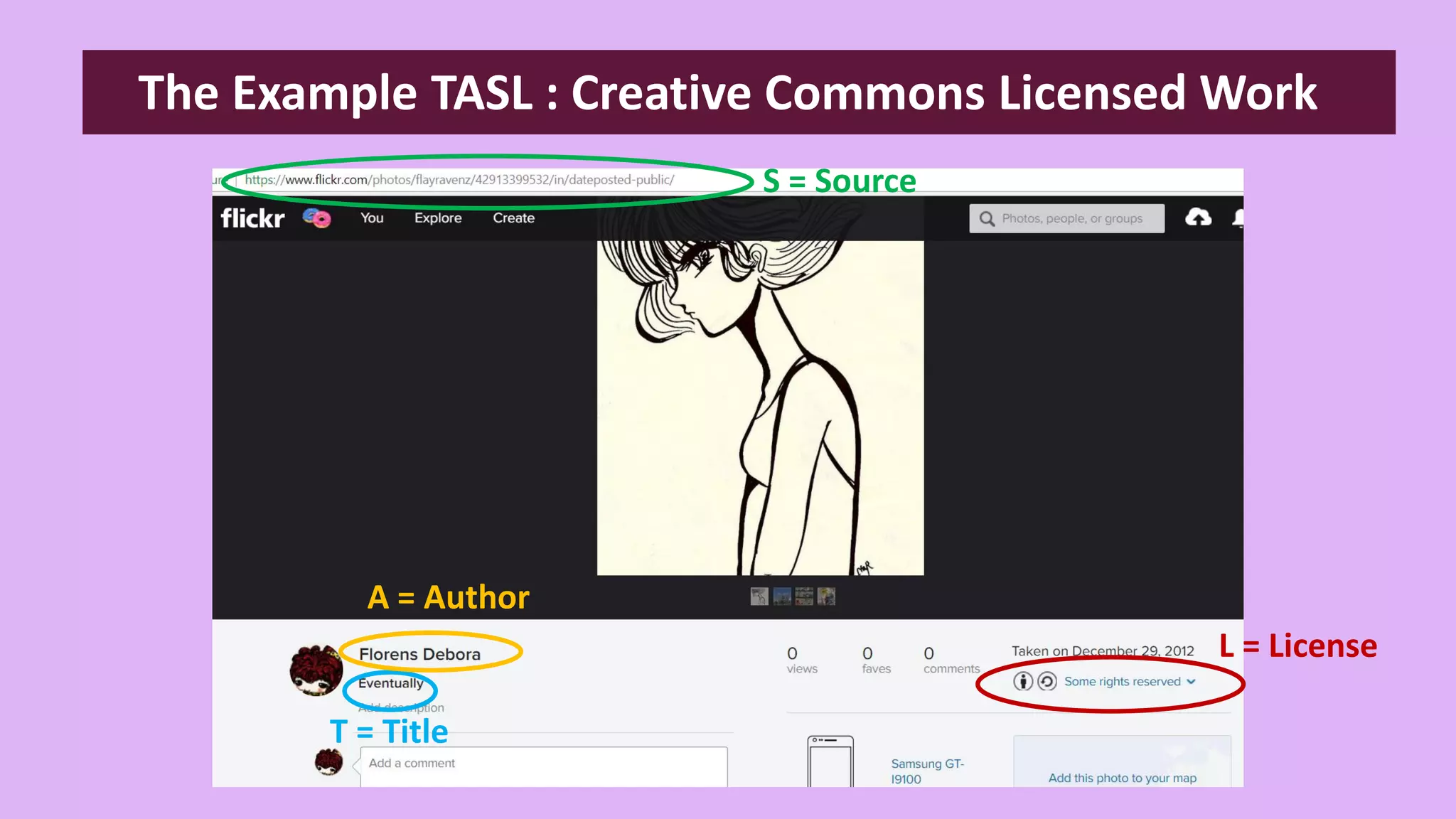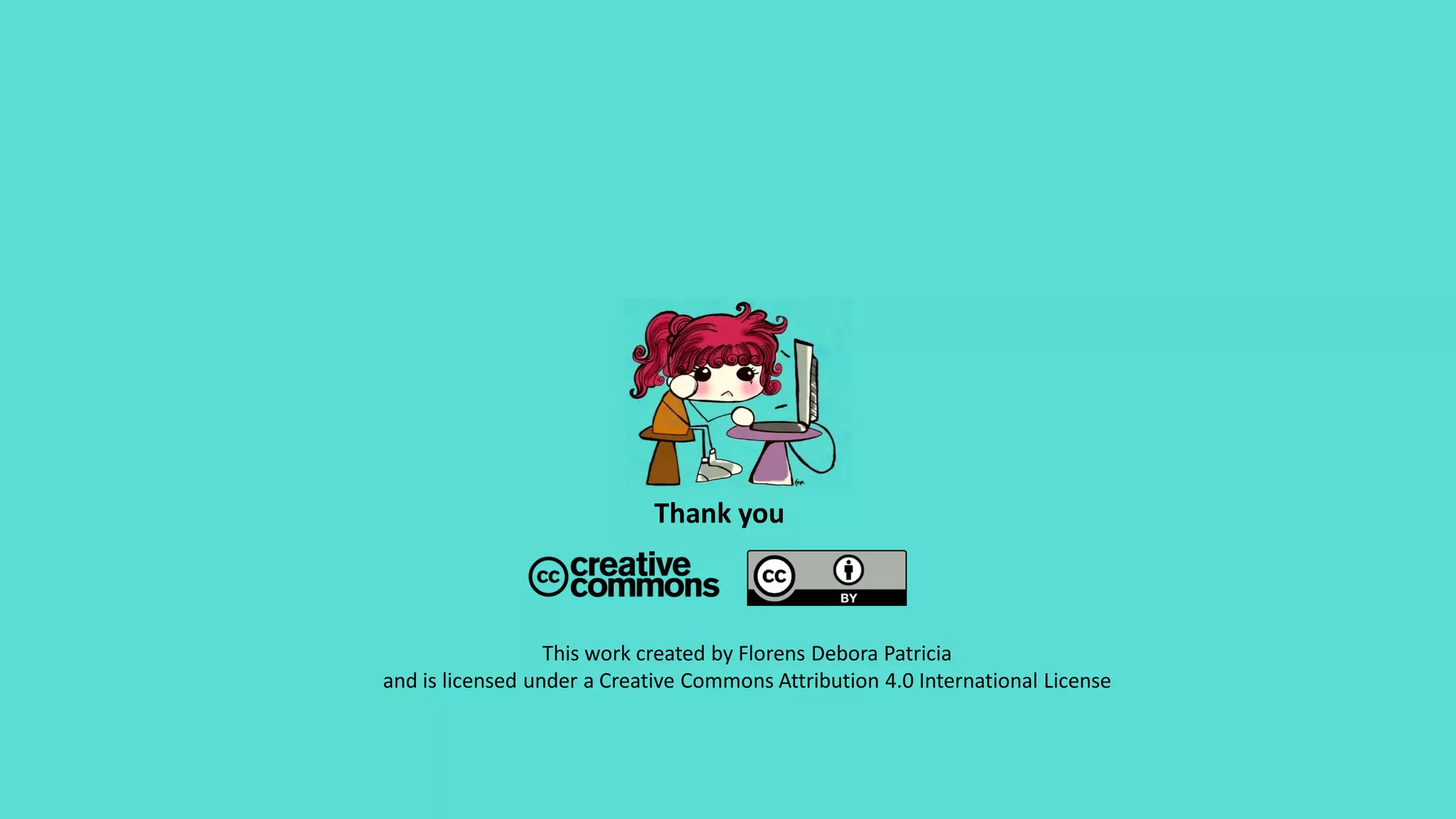The document outlines how to use Creative Commons (CC) licensed works, emphasizing the importance of following license conditions for collection and adaptation. It details the six types of CC licenses, explaining the permissions and restrictions of each, and highlights the need for compatibility between licenses when combining works. Additionally, it provides guidelines for attributing CC licensed works using the TASL formula: title, author, source, and license.
